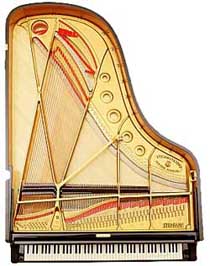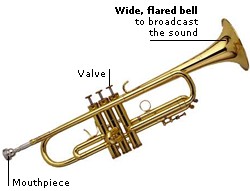DK Arts & Entertainment: Musical Instruments
We use a huge range of instruments to produce sounds and make music. Some are simple pieces of solid wood or hollowed-out seashells. Others are highly technical or electric. Instruments vary around the world, and each has its own character.
Acoustic instruments generate sound physically and electronic instruments create sound electrically. There are four acoustic groups: percussion (hit or shaken), wind (woodwind and brass; blown), string (bowed or plucked), and keyboard (played with fingers).
An instrument creates sound when part of it vibrates rapidly. The column of air inside a wind instrument, the string of a string instrument, or the stretched skin of a drum all vibrate when played. This vibration produces sound waves in the air, which we hear as musical notes.

When a musician hits a key, a hammer strikes a string inside the piano. The string vibrates, making a sound. In a grand piano the strings are arranged horizontally. In an upright piano they are arranged vertically, to save space.
Electronic instruments—such as electronic keyboards— do not make actual sounds in the way an acoustic instrument does. An electronic instrument produces an electric signal that is transmitted to an amplifier and then broadcast through a loudspeaker. Using a process called synthesis, electronic instruments imitate acoustic instruments or create their own noises.


